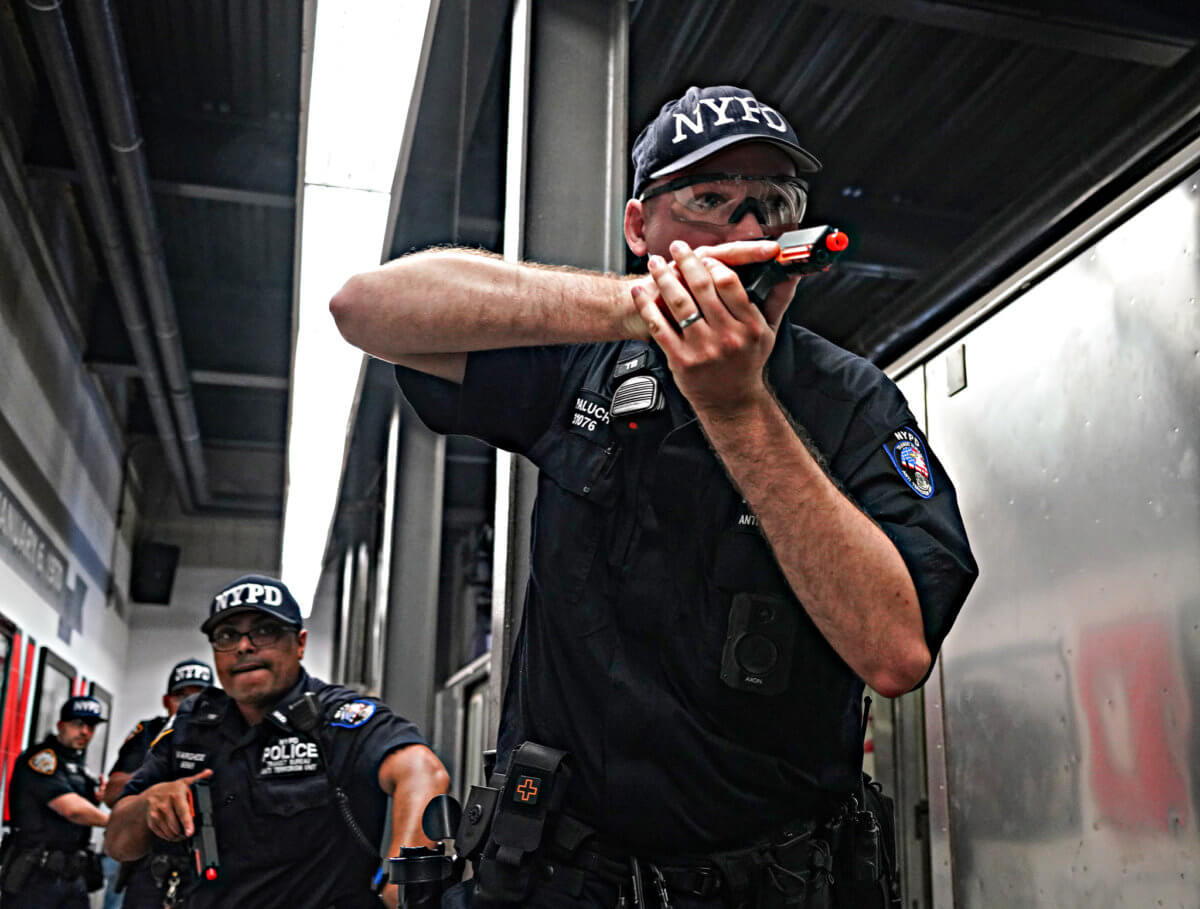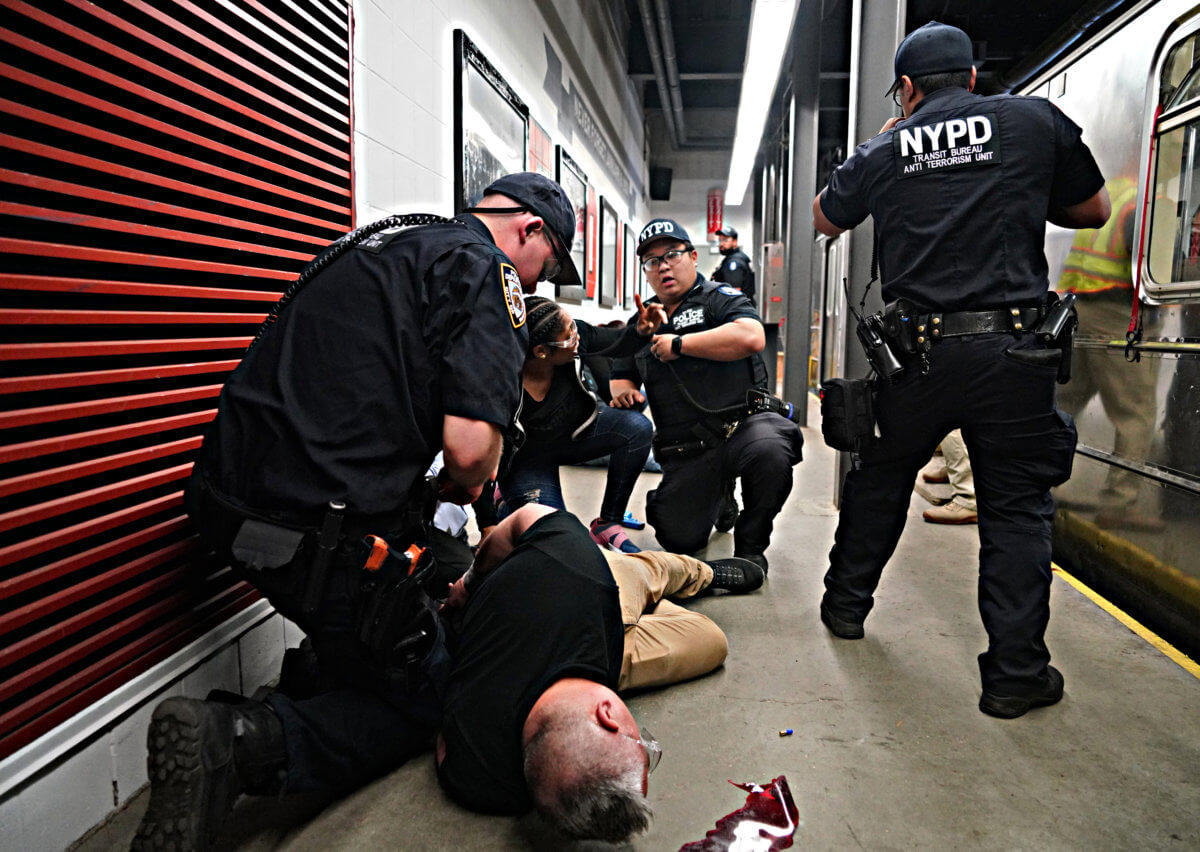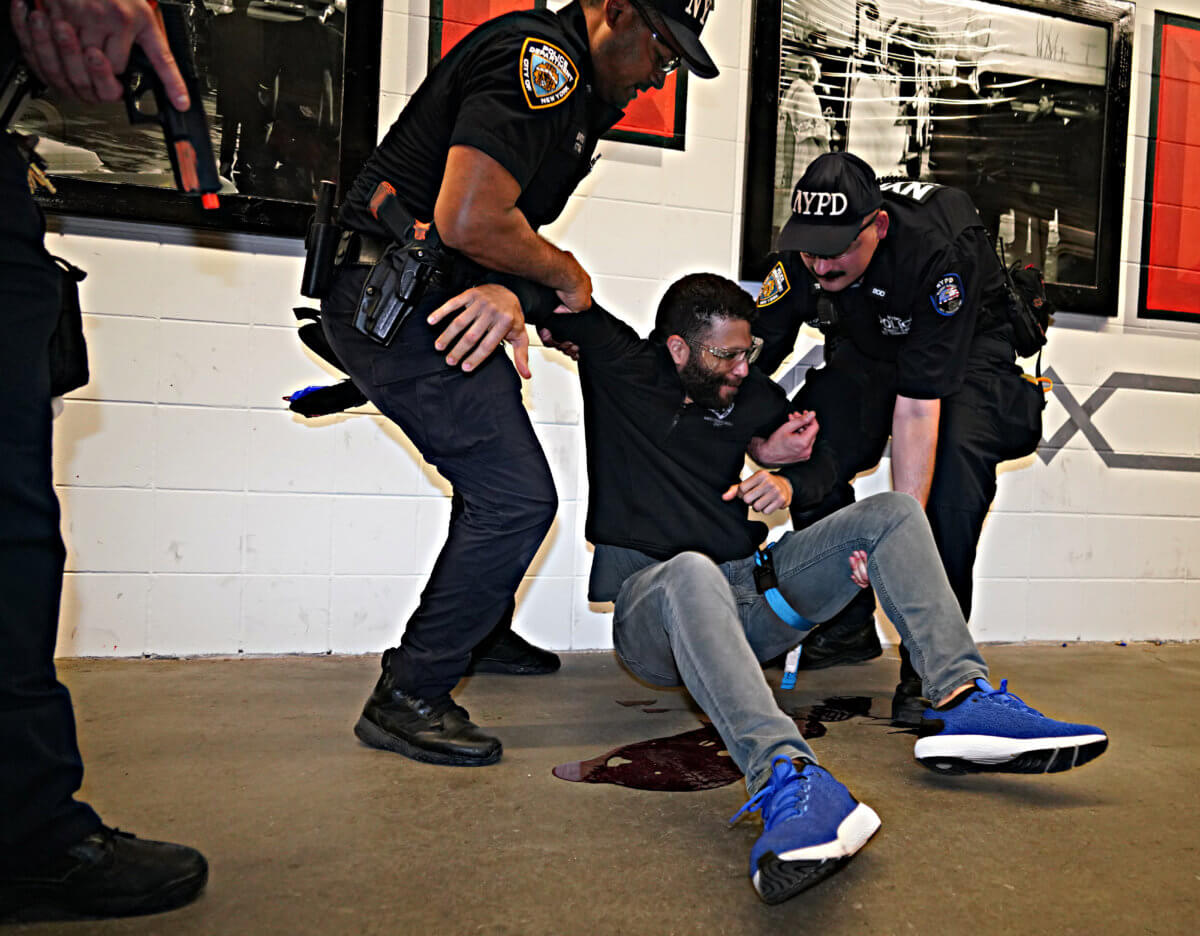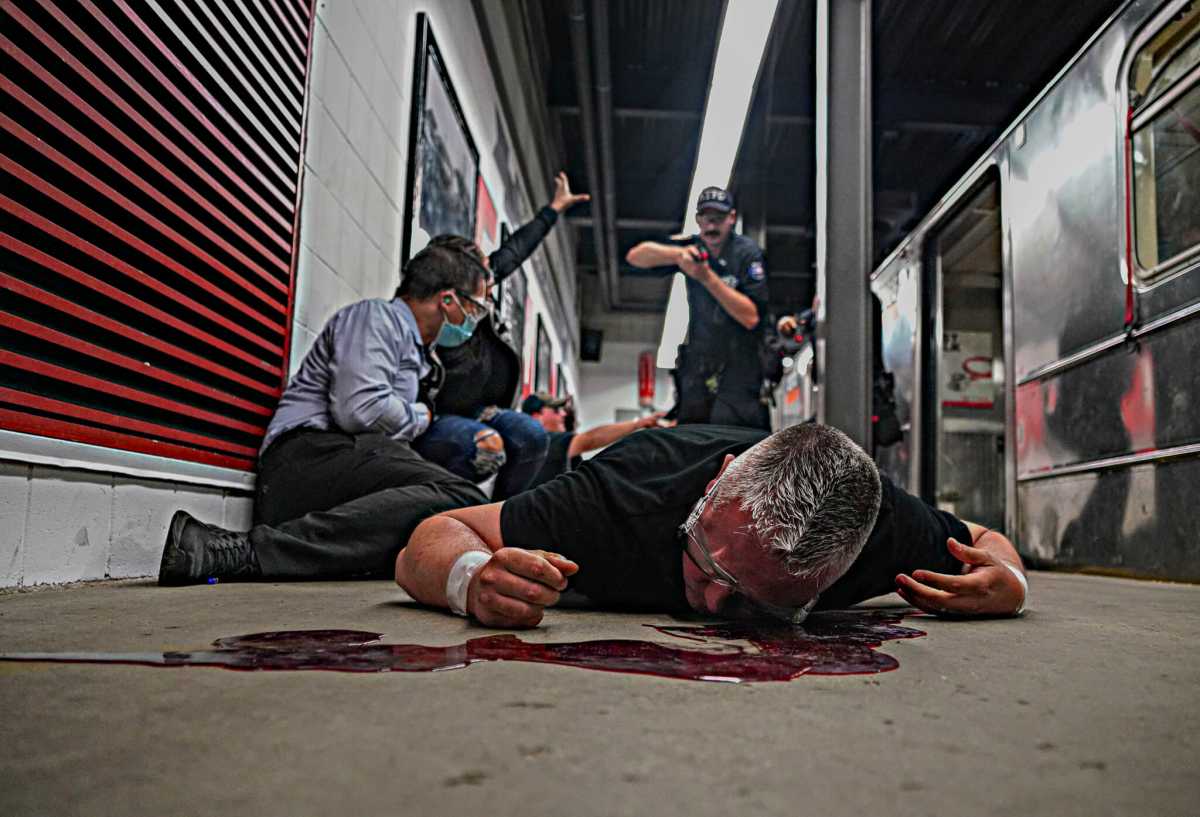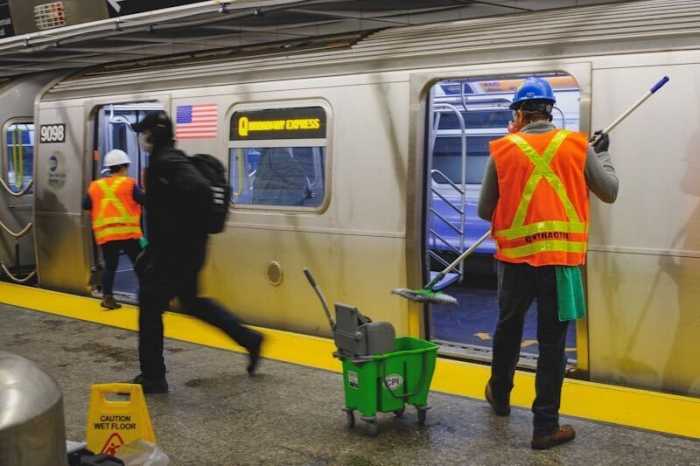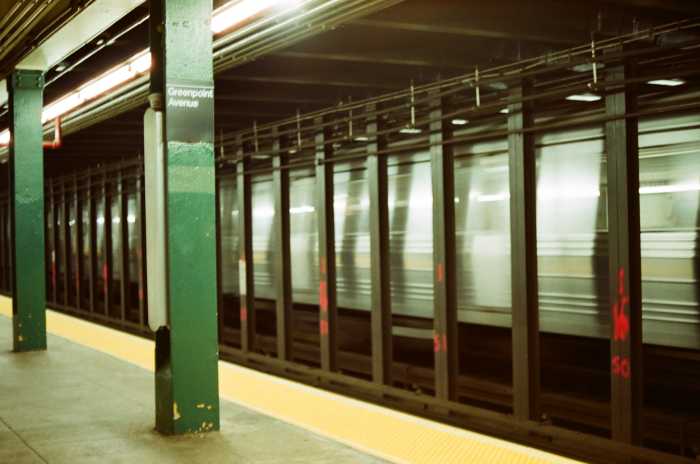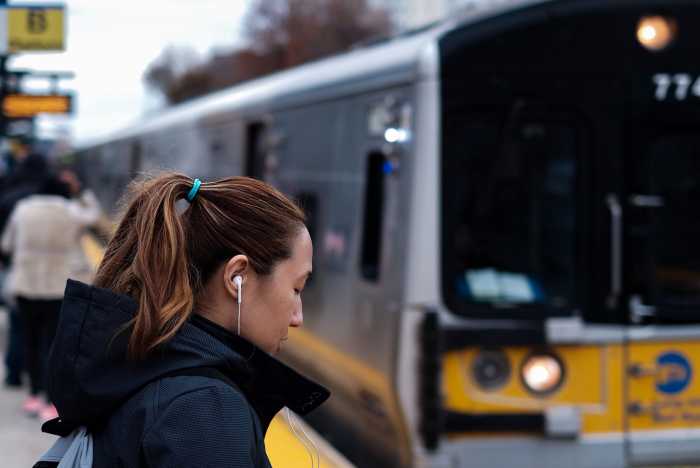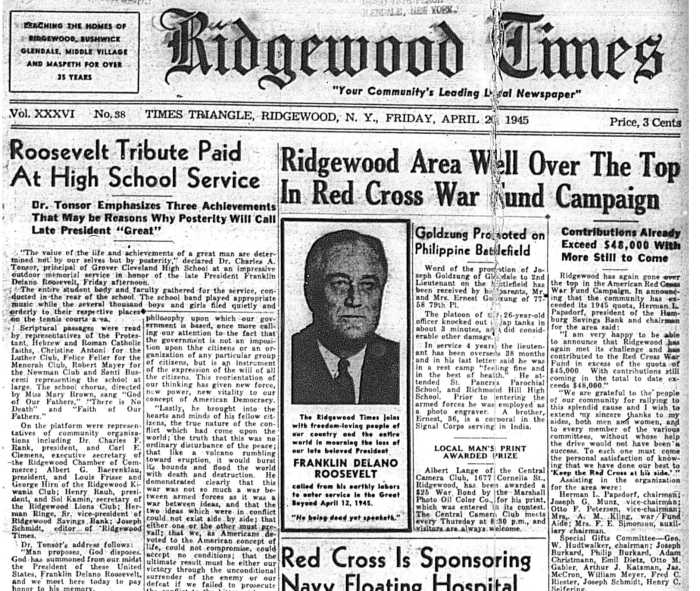When active shooter Frank James unleashed a torrent of terror in a Brooklyn subway station earlier this year, the senseless act of domestic terrorism left the city in shock. However, the NYPD was already working on new training measures to deal with eerily similar circumstances.
In a joint effort between the NYPD and the Department of Homeland Security, transit officers are undergoing rigorous and realistic training to deal with active shooter scenarios not dissimilar to the Brooklyn shooting back on April 12.
The innovative program is beginning by training about a dozen officers to deal with emergency situations inside the transit system, before expanding the program over the next year. Utilizing the FDNY training facility on Randall’s Island, officers are put to the test inside a replica of an NYC subway station complete with a stalled train car.
amNewYork Metro got a look at a recent active shooting drill at the facility, as these officers prepared for the worst possible scenarios.
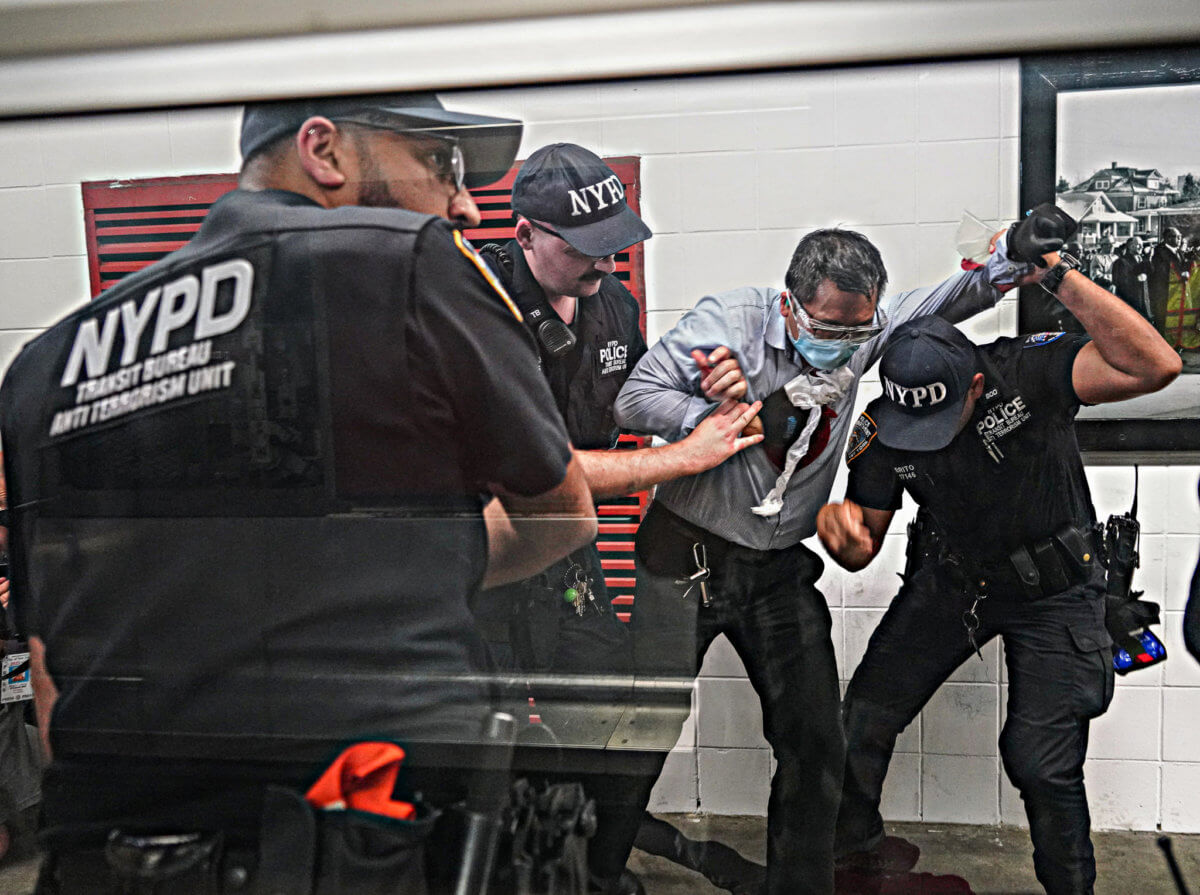
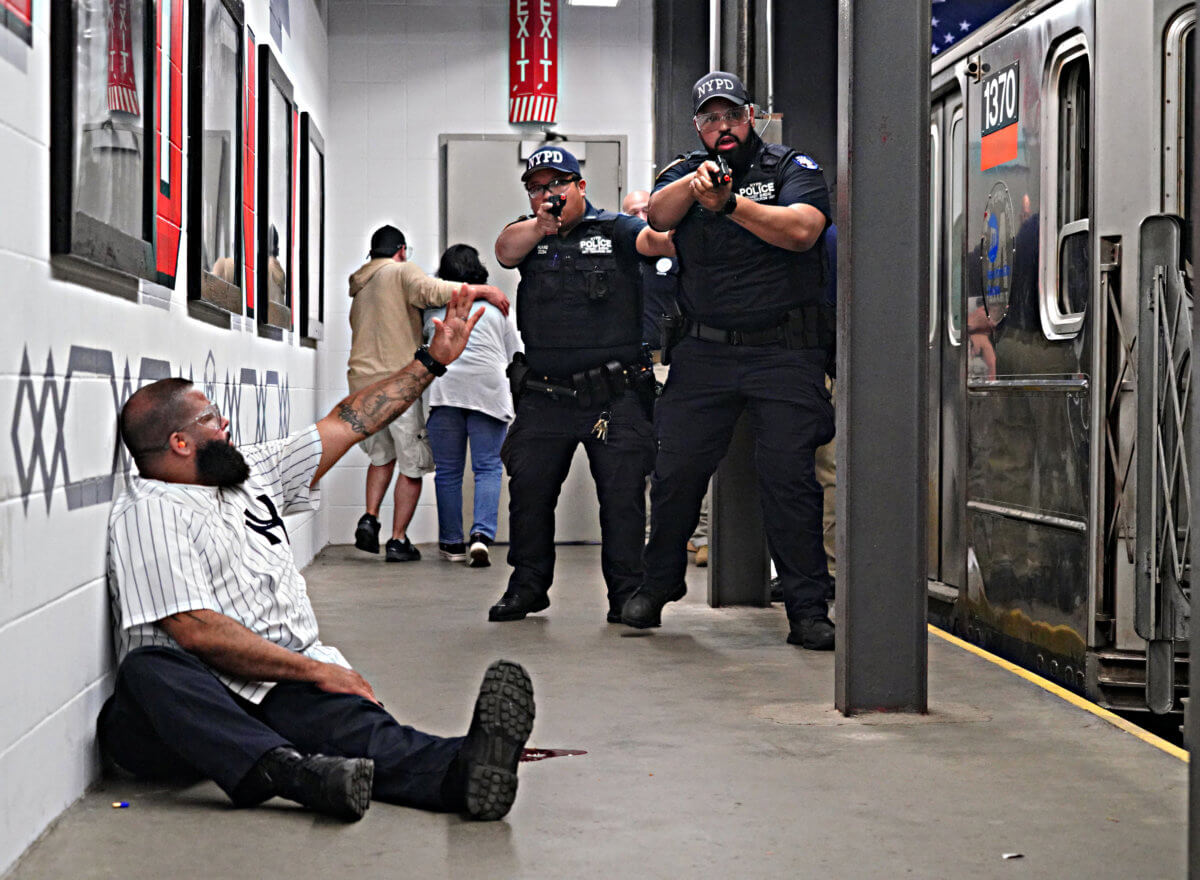
“We’re here today on a four-day training involving an active shooter. We are here with our partners from the Federal Law Enforcement Training Center down in Georgia. They came up today to provide us with some subject matter expertise in operating in a subway environment,” said Inspector Raymond Porteus, Commanding Officer of the Transit Bureau’s Special Operation Division.
While officers already receive active shooter training, NYPD believes there are always ample lessons to be learned regarding rapid response and the primary goal which is to “Stop the killing, stop the dying.”
The new lessons zero in on subway platforms and the carriages themselves during an incident of either a rampage shooter or even an individual armed with a knife.
“The training was conducted by the transit bureau of our anti-terrorism unit. It was most prudent that we train them first. This is going to be ongoing training. All of our officers have active shooter training; however, this was a little more specific to the subway environment and where the experts come up,” Porteus said.
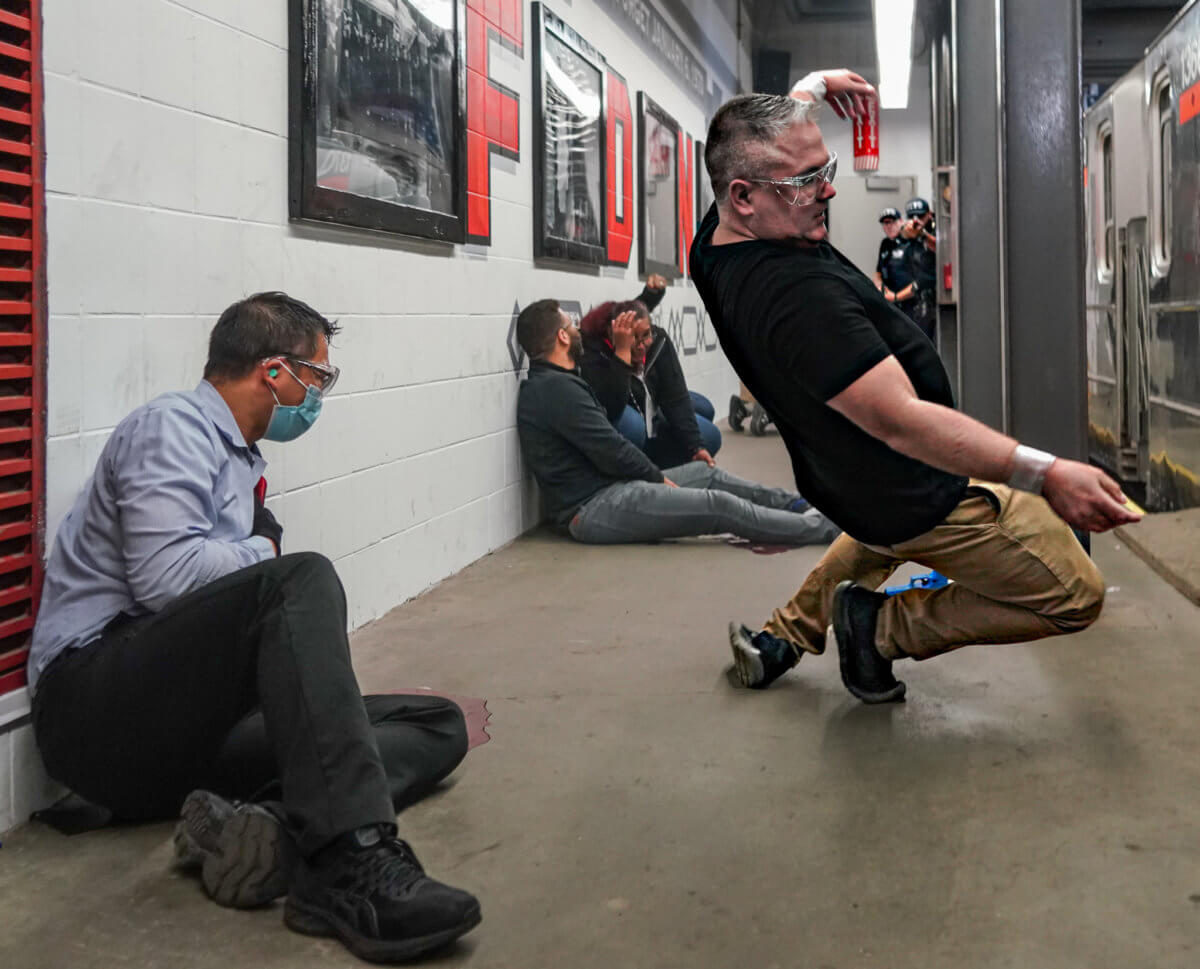
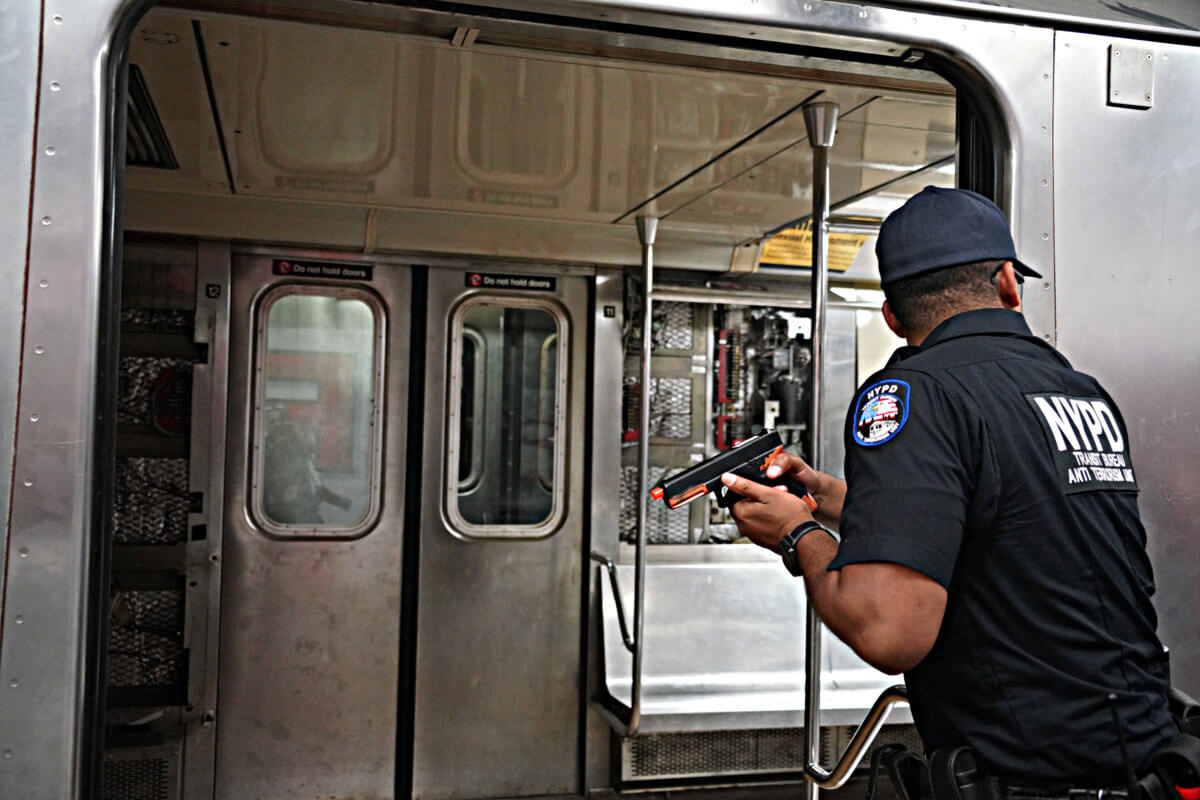
In order to ensure prompt and accurate responses, the scenarios are made as realistic as possible.
Actors play wounded straphangers who plead for help and reach out for officers as they engage the shooter. Recordings of deafening screams and shrieks are pumped through overhead loudspeakers. Smoke engulfed the train and platform, making visibility extremely low.
And perhaps most importantly of all, a suspect brandished a gun that fired ear-splitting blanks.
“Today’s reaction was great and proper. So, they immediately responded to whether it was a stabbing or shots fired. Immediate response. They immediately stopped the killing. When they stopped the killing, we transitioned to stop the dying,” CJ Taylor said, from the Federal Law Enforcement Training Center. “After we stopped the killing. We secured the suspect. They went and transitioned to putting tourniquets or chest seals, depending on the injury is how they treated and then what we moved to is transitioning to get them to trauma one care.”
With active shooter trainings such as these, NYPD believes they will be able to minimize harm to human life thanks to rapid and unparalleled response time and understanding of a given situation.
